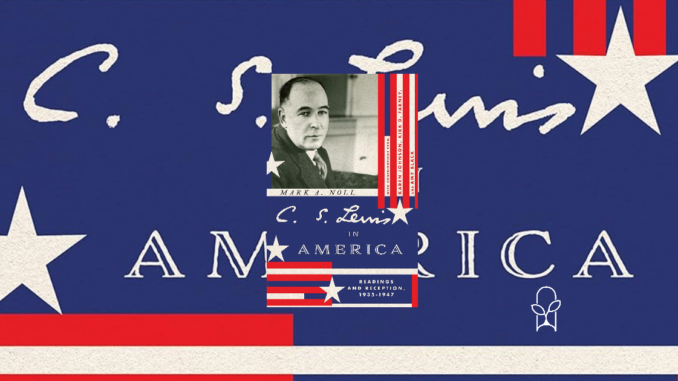
Also by this author: Every Leaf, Line, and Letter: Evangelicals and the Bible from the 1730s to the Present, Every Leaf, Line, and Letter: Evangelicals and the Bible from the 1730s to the Present, The Scandal of the Evangelical Mind
Series: Hansen Lectureship Series #7
Published by IVP on November 14, 2023
Genres: Non-Fiction, Apologetics, Christian Life, Theology, Writing
Buy on Amazon
Goodreads

Perhaps no other literary figure has transformed the American religious landscape in recent history as much as C. S. Lewis. Even before the international publication and incredible success of his fictional works such as The Chronicles of Narnia or apologetic works like Mere Christianity, Lewis was already being read "across the pond" in America. But who exactly was reading his work? And how was he received?
With fresh research and shrewd analysis, this volume by noted historian Mark A. Noll considers the surprising reception of Lewis among Roman Catholic, mainline Protestant, and evangelical readers to see how early readings of the Oxford don shaped his later influence.
Based on the annual lecture series hosted at Wheaton College's Marion E. Wade Center, volumes in the Hansen Lectureship Series reflect on the imaginative work and lasting influence of seven British authors: Owen Barfield, G. K. Chesterton, C. S. Lewis, George MacDonald, Dorothy L. Sayers, J. R. R. Tolkien, and Charles Williams.
This new look at the ever-popular topic of C.S. Lewis’s work focuses on the critical reception his early nonfiction works and science fiction trilogy received in America. This book focuses on his career prior to Narnia, and the ways that different subsets of the American population responded to his work. The first chapter explores the Roman Catholic response to Lewis’s work, showing how deeply they appreciated his writing despite their theological differences. The second chapter focuses on mainstream secular critics, and the third chapter covers the Protestant response, distinguishing mainline critics from fundamentalists and early evangelicals. This material from Mark A. Noll is based on a series of lectures that he presented, but the chapters read so smoothly that you would never know that they were adapted from another medium.
Interspersed between these chapters from Noll, there are also responses from other writers. These reflections focus on different elements of the American religious landscape, with Karen J. Johnson writing about the role of race in American Catholic church culture during this time, Kirk D. Farney reflecting on mainstream receptiveness to a fresh, creative Christian voice, and Amy E. Black sharing thoughts on the model C.S. Lewis created for Protestant’s cultural engagement. These sections enrich the book by providing additional historical context and thought-provoking reflections.
C. S. Lewis in America: Readings and Reception, 1935–1947 will appeal to Lewis scholars, to super-fans, and to people who are interested in this unique angle on American Christianity in this era. Personally, I wish that the book had also included responses from ordinary readers, rather than only focusing on published literary criticism. The latter is certainly a narrower topic that is easier to study exhaustively, but I think this book would be stronger if it had included reactions from the general reading public. That would have also included more female voices, since the critics were almost entirely male, while Lewis had a vibrant readership among everyday men and women who weren’t publishing professional reviews in newspapers and magazines. Nonetheless, this book is a unique and interesting addition to the conversation about C.S. Lewis’s legacy.
